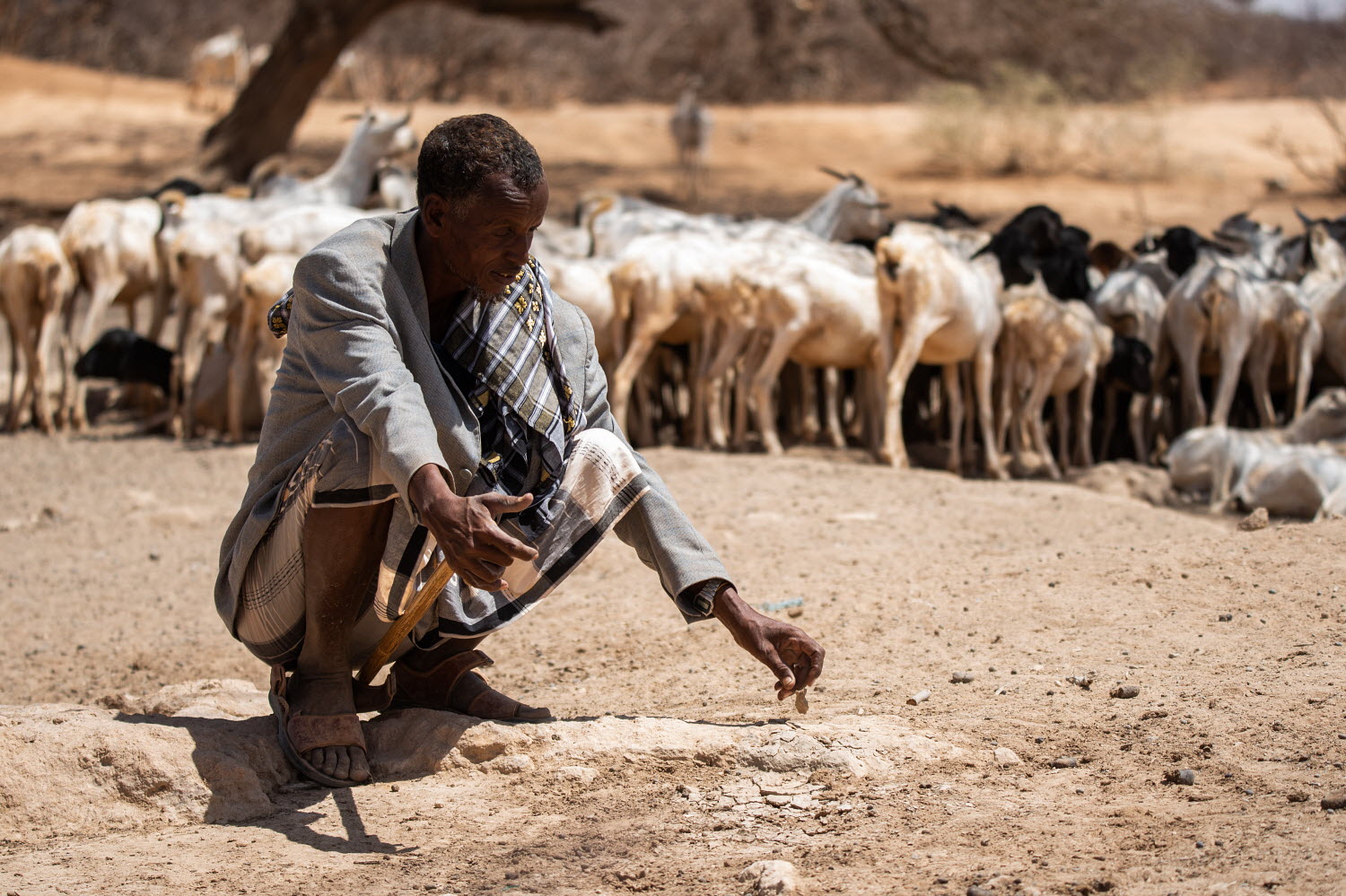| Objective / Goal |
The objective of the project was to improve livelihood diversification of pastoral and agropastoral communities through nutrition-sensitive agriculture promotion (livestock and crops). The specific objectives were to:
- reduce morbidity and mortality of livestock herds by implementing livestock vaccination and treatment interventions;
- assist vulnerable households maintain productive and reproductive
status of core livestock breeding stock (procure and distribute 10 000
multi-nutrient block (MNBs), 100 quintals of urea, 8 000 quintals of molasses, 5 000 tons of
bagasse, 2 000 L of effective microorganism, 500 kg forage seeds, and
farm tools necessary for treating and ensiling crop residues as well as
forage production and utilization);
- improve water
availability for livestock through rehabilitating of water points
(survey and design 7 water points as well as discuss with the community
on the improvement plan; Rehabilitate 7 water points (3 ponds and 4
ellas– traditional hand dug wells);
- assist vulnerable
households maintain and improve the productivity of their crop land
(e.g. procure and distribute improved and high yielding seeds and clean
planting materials of selected varieties to targeted farmers and
agropastorals).
|
| Activities |
The projects had 4 outputs: - Output 1: livestock morbidity and mortality due to different livestock diseases reduce.
The animal health intervention is vital for protection of livestock from diseases of economic and public health importance. This was implemented through government and community-based animal health delivery system which involves strengthening the linkages of private pharmacies linked to community animal health workers. The intervention was facilitated through a vouchers based animal health care approach addressing most vulnerable households for livestock treatment. Under this output the project supported 800 000 livestock owned by 199 525 people (39 905 households). Core activities included:- determination of the value of vouchers for livestock treatment with community participation;
- allocation of veterinary drugs to 6 private veterinary pharmacies and 120 community-based animal health workers (CAHWs);
- vaccination of 600 000 animals for transboundary diseases (TADs) and emerging sporadic diseases as appropriate; and
- treatment of 200 000 animals for internal and external parasites and miscellaneous infections through voucher.
- Output 2: productive and reproductive states of the core livestock breeding stock protected and restored.
The planned livestock feed intervention was designed to preserve the livestock assets of the resource-poor pastoral, agropastoral and smallholder farming households in 4 zones of the two regions. The feed intervention stimulated the fast recovery from the negative impacts of the looming climatic disaster and bases itself on multi-nutrient block (MNB), urea-molasses, and effective micro-organisms treated and ensiled crop residues. The livestock feed will support 6 000 animals owned by 15 000 people (3 000 households).
Core feed intervention activities were the following:- conducting target beneficiary selection on consultative meetings; and
- procurement and distribution of 10 000 MNBs, 100 quintals of urea, 8 000 quintals of molasses, 5 000 tons of bagasse, 2 000 L of effective microorganism, 500 kg forage seeds, and farm tools necessary for treating and ensiling crop residues as well as forage production and utilization.
- Output 3: access and availability of water for livestock improved.
The rehabilitation and management of water points in pastoral and small holder areas of Afar and SNNPR was central to the viability of the pastoral production and small holding farming systems through improving access to existing water points, in particular Ellas (traditional hand dug wells) and ponds. The project benefited 27 500 livestock owned by 2 500 households. Specific activities included:
- discussion with the community on rehabilitation and sustainable use of water points;
- survey and design of 7 water points as well as discuss with the community on the improvement plan; and
- rehabilitation of 7 water points (3 ponds and 4 ellas– traditional hand dug wells).
- Output 4: crop productivity and production of smallholder farmers and agropastoralist improved.
Crop seed was one of the crucial inputs requested as the vast majority of smallholder farmers and agro-pastoralists were dependent on informal seed sector including own saved seed, borrowing and sharing. Both the communities and the local authorities in SNNP and Afar regions were requesting for urgent support. The seed component of this project was designed to distribute seeds and planting materials of cereals, vegetables and root crops to those poor families that cannot afford to buy seed and planting materials on the market. Specifically the project distributed 444 quintals of cereal seed, 647 kilograms of vegetable seed, 281 quintals of Irish potato seed and 3 071 875 sweet potato cuttings that was sufficient to cover 0.25 ha of each household for total of 53 610 people (10 722 households) in six woredas of the two regions. This enabled the beneficiaries to plant total of 2 026 ha of land. Specific activities were: - identification of suitable sites and target households through a predefined and agreed selection criteria with communitues;
- sensitization and joint planning with implementing partners to define the responsibilities of stakeholders;
- provision of capacity building training and technical support to subject matter specialists, development agents and farmers on improved crop production practices. The training was envisaged to improve effective use of emergency resources and to achieve the desired objectives through improved productivity;
- procurement and distribution of improved and high yielding seeds and clean planting materials of selected varieties to targeted farmers and agropastorals;
- provision of technical support, monitoring and evaluation of project implementation.
|

